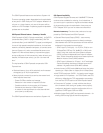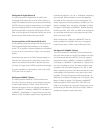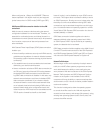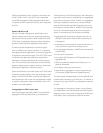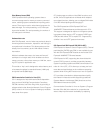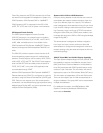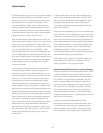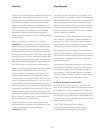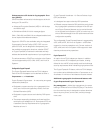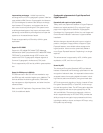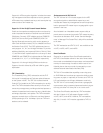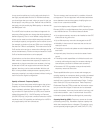The HiperSockets function, also known as internal Queued
Direct Input/Output (iDQIO) or internal QDIO, is an inte-
grated function of the z10 BC server that provides users
with attachments to up to sixteen high-speed “virtual”
Local Area Networks (LANs) with minimal system and
network overhead. HiperSockets eliminates the need to
utilize I/O subsystem operations and the need to traverse
an external network connection to communicate between
logical partitions in the same z10 BC server.
Now, the HiperSockets internal networks on z10 BC can
support two transport modes: Layer 2 (Link Layer) as well
as the current Layer 3 (Network or IP Layer). Traffi c can
be Internet Protocol (IP) version 4 or version 6 (IPv4, IPv6)
or non-IP (AppleTalk, DECnet, IPX, NetBIOS, or SNA).
HiperSockets devices are now protocol-independent and
Layer 3 independent. Each HiperSockets device has its
own Layer 2 Media Access Control (MAC) address, which
is designed to allow the use of applications that depend
on the existence of Layer 2 addresses such as DHCP
servers and fi rewalls.
Layer 2 support can help facilitate server consolidation.
Complexity can be reduced, network confi guration is
simplifi ed and intuitive, and LAN administrators can con-
fi gure and maintain the mainframe environment the same
as they do a non-mainframe environment. With support
of the new Layer 2 interface by HiperSockets, packet
forwarding decisions are now based upon Layer 2 infor-
mation, instead of Layer 3 information. The HiperSockets
device performs automatic MAC address generation and
assignment to allow uniqueness within and across logical
partitions (LPs) and servers. MAC addresses can also be
locally administered. The use of Group MAC addresses
for multicast is supported as well as broadcasts to all
other Layer 2 devices on the same HiperSockets network.
Datagrams are only delivered between HiperSockets
devices that are using the same transport mode (Layer 2
with Layer 2 and Layer 3 with Layer 3). A Layer 2 device
cannot communicate directly with a Layer 3 device in
another LPAR.
A HiperSockets device can fi lter inbound datagrams by
Virtual Local Area Network identifi cation (VLAN ID, IEEE
802.1q), the Ethernet destination MAC address, or both.
Filtering can help reduce the amount of inbound traf-
fi c being processed by the operating system, helping to
reduce CPU utilization.
Analogous to the respective Layer 3 functions, HiperSockets
Layer 2 devices can be confi gured as primary or secondary
connectors or multicast routers. This is designed to enable
the creation of high performance and high availability Link
Layer switches between the internal HiperSockets network
and an external Ethernet or to connect the HiperSockets
Layer 2 networks of different servers. The HiperSockets
Multiple Write Facility for z10 BC is also supported for
Layer 2 HiperSockets devices, thus allowing performance
improvements for large Layer 2 datastreams.
HiperSockets Layer 2 support is exclusive to System z10
and is supported by z/OS, Linux on System z environ-
ments, and z/VM for Linux guest exploitation.
HiperSockets Multiple Write Facility for increased performance
Though HiperSockets provides high-speed internal TCP/IP
connectivity between logical partitions within a System z
server – the problem is that HiperSockets draws excessive
CPU utilization for large outbound messages. This may
lead to increased software licensing cost – HiperSock-
ets large outbound messages are charged to a general
CPU which can incur high general purpose CPU costs.
This may also lead to some performance issues due to
synchronous application blocking – HiperSockets large
outbound messages will block a sending application while
synchronously moving data.
A solution is HiperSockets Multiple Write Facility.
HiperSockets performance has been enhanced to allow
for the streaming of bulk data over a HiperSockets link
between logical partitions (LPARs). The receiving LPAR
can now process a much larger amount of data per I/O
HiperSockets
34



